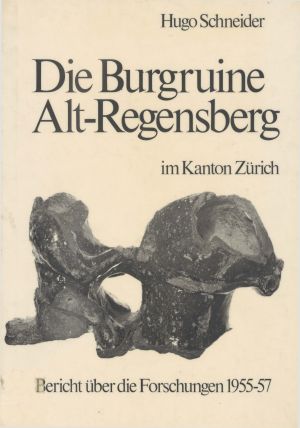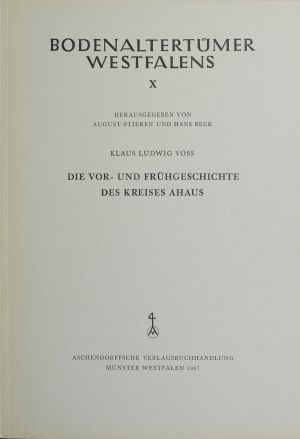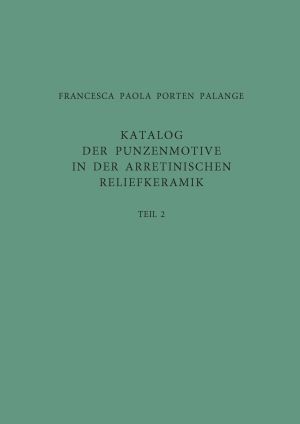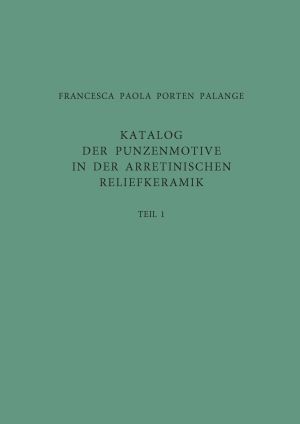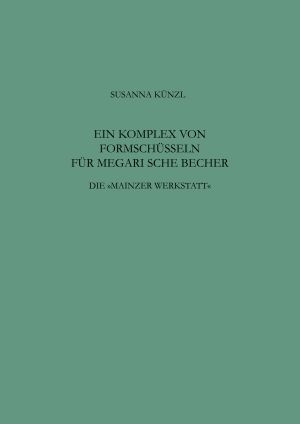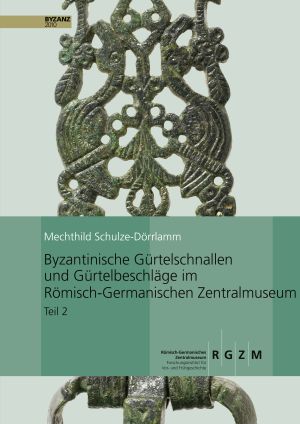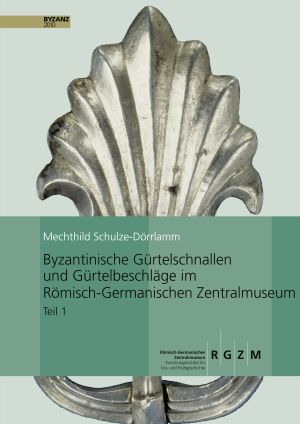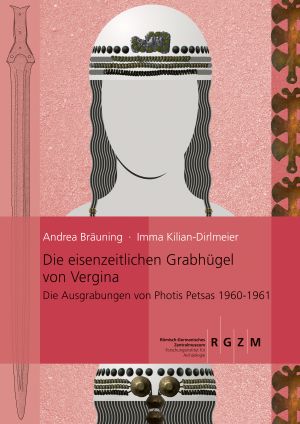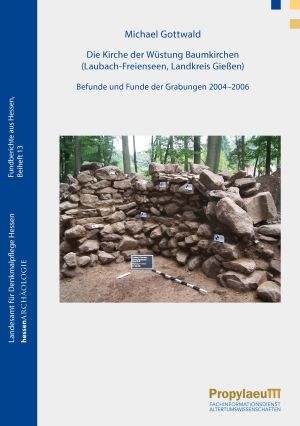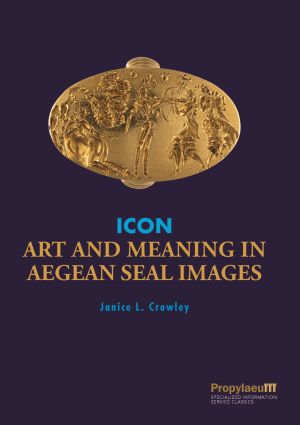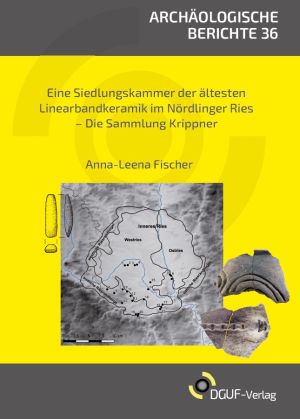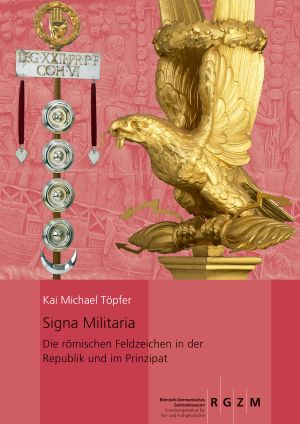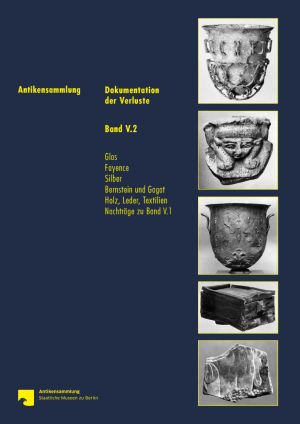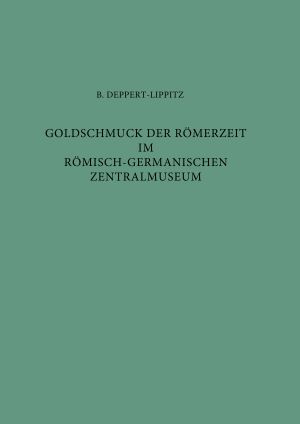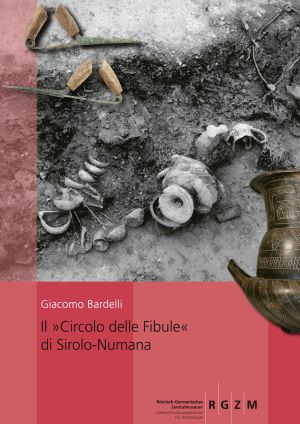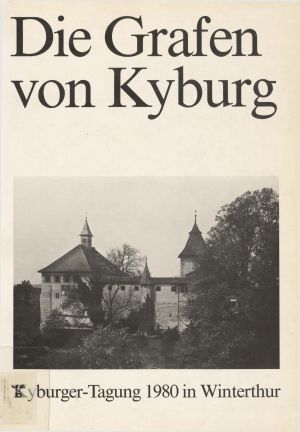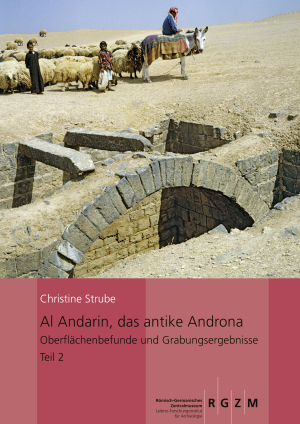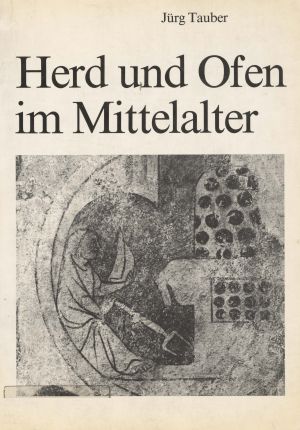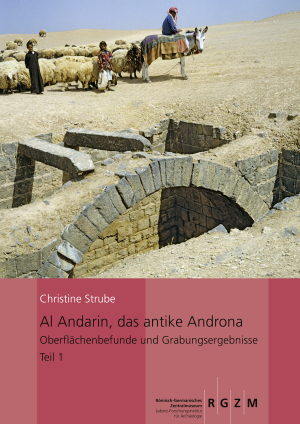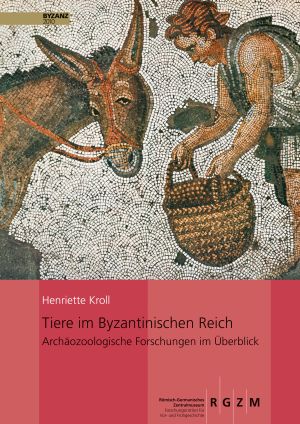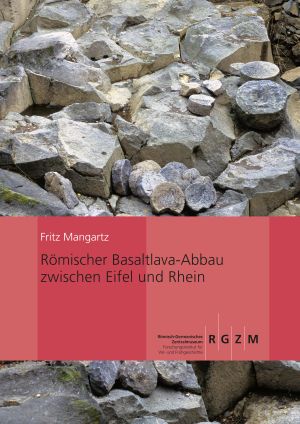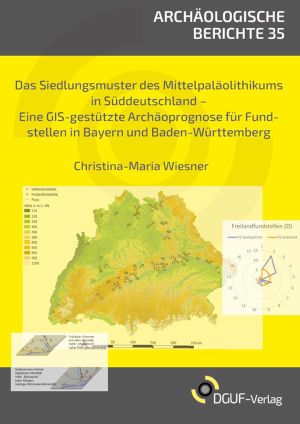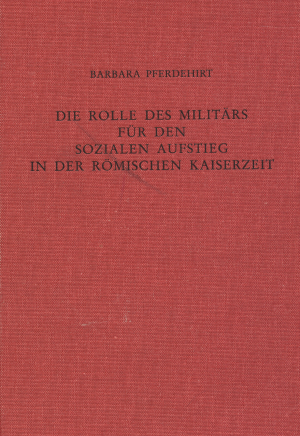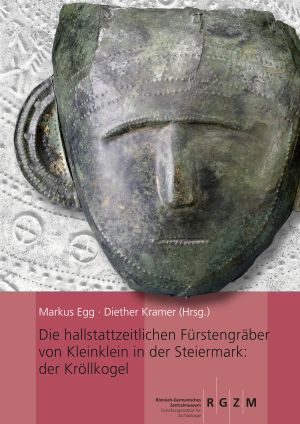Bücher
Die Burgruine Alt-Regensberg im Kanton Zurich: Bericht über die Forschungen 1955-57
Die Ausgrabung und Sanierung der in der Nähe der Stadt Zürich gelegenen Burgruine «Altburg», Stammsitz der Freiherren von Regensberg, erfolgte im Auftrag des Kantonalen Hochbauamtes Zürich und in enger Zusammenarbeit mit dem Schweizerischen Landesmuseum. Sie bot die Gelegenheit, eine historisch bedeutende frühe Burganlage exemplarisch zu erforschen und zu dokumentieren. Die Burg selbst liegt auf einem Moränenhügel, der im ausgehenden 11. Jh. von den Regensbergern befestigt worden war und um 1200 unter den Regensbergern wie auch im 14. Jh. unter den Herren von Landenberg einen Ausbau erlebte. Ein zeitgemässer Umbau um 1460 durch Rudolf Mötteli stiess auf den Widerstand der Stadt Zürich, welche die Anlage schliesslich übernahm und zerfallen liess.
Die Publikation verbindet Besitzer- und Baugeschichte und widmet insbesondere den Freiherren von Regensberg breiten Platz, gefolgt von einer detailreichen Präsentation der Grabungsbefunde. Einzeln vorgestellt werden die vier Hauptetappen vom hohen bis ins ausgehende Mittelalter sowie – mit einem bebilderten Katalog – die mehrere Hundert Objekte umfassenden Funde, aufgegliedert nach Ofenkeramik, Topf- und Geschirrkeramik, Eisen, Münzen, Buntmetall und Knochen.
Katalog der Punzenmotive in der arretinischen Reliefkeramik: Teil 2
Der Katalog erschließt umfassend die Punzenmotive der seit etwa 30 v.u.Z in Arezzo und Umgebung produzierten Reliefkeramik.
Zu Band 1
Katalog der Punzenmotive in der arretinischen Reliefkeramik: Teil 1
Der Katalog erschließt umfassend die Punzenmotive der seit etwa 30 v.u.Z in Arezzo und Umgebung produzierten Reliefkeramik.
Zu Band 2
Ein Komplex von Formschüsseln für Megarische Becher: Die »Mainzer Werkstatt«
Als "Mainzer Werkstatt" wird eine Gruppe von 114 Gussformen oder -fragmenten für die Herstellung von hellenistischen Schalen mit Reliefs bezeichnet, die Ende der 1960er/Anfang der 1970er Jahre in verschiedene Sammlungen gelangten. Der mit 76 Stücken größte Teil befindet sich in der Sammlung des Römisch-Germanischen Zentralmuseums und wird hier vorgelegt. Produziert wurden die Gefäße wohl Ende des 2./Anfang des 1. Jahrhunderts v.Chr. in Westkleinasien.
Byzantinische Gürtelschnallen und Gürtelbeschläge im Römisch-Germanischen Zentralmuseum: Die Schnallen ohne Beschläg, mit Laschenbeschläg und mit festem Beschläg des 5. bis 7. Jahrhunderts
Das Römisch-Germanische Zentralmuseum in Mainz besitzt derzeit 363 byzantinische Gürtelschnallen und -beschläge des 7. bis frühen 11. Jahrhunderts. Sie stammen überwiegend aus dem Zentrum des Byzantinischen Reiches, in dem es kaum Gräberfelder mit Grabbeigaben und deshalb nur wenige Funde gibt. Daher schließen diese Schnallen eine große Lücke in unserer Kenntnis über dieses Kleidungszubehör – obwohl es sich ausnahmslos um Einzelstücke ohne Fundzusammenhang handelt.
Auch in Teil 2 des Kataloges werden Merkmale, Zeitstellung sowie Verbreitungsgebiete der verschiedenen Schnallentypen aufgezeigt, und eine Chronologietabelle erleichtert dem Leser die Datierung von Neufunden. Die Auswertung geht u.a. auf Fragen der Handwerks-, Handels- und Trachtgeschichte ein, sucht aber auch nach den einstigen Besitzern. Dies waren überwiegend Männer, die Schnallen nicht nur zum Verschluss ihres Leibgurtes benutzten, sondern zugleich auch als Abzeichen ihres Ranges, der an Metall und Dekor ablesbar war. Erstmals fanden sich darüber hinaus Indizien dafür, dass Frauen spätestens im 9. Jahrhundert begonnen haben, Gürtelschnallen auf geschlechtsspezifische Weise zu tragen.
In einem eigenen Beitrag schildert die Restauratorin M. Fecht ihre Untersuchungsergebnisse zur Herstellungstechnik und zur – meist verloren gegangenen – Farbigkeit byzantinischer Gürtelschnallen des 8. Jahrhunderts.
Als Ergänzung zu Teil 1 wurde außerdem in diesen Band ein Katalog von 33 nachträglich erworbenen Fundstücken aufgenommen.
Zu Band 1
Byzantinische Gürtelschnallen und Gürtelbeschläge im Römisch-Germanischen Zentralmuseum: Die Schnallen ohne Beschläg, mit Laschenbeschläg und mit festem Beschläg des 5. bis 7. Jahrhunderts
Das Römisch-Germanische Zentralmuseum besitzt eine der weltweit größten Sammlungen byzantinischer Gürtelschnallen, die überwiegend aus dem Zentrum des Byzantinischen Reiches stammen. Selbst als Einzelstücke ohne Fundzusammenhang vermitteln sie wichtige Erkenntnisse über Form und Dekor dieses Kleidungszubehörs, das mehrheitlich von Männern – insbesondere von Soldaten – an ihrem Leibgurt getragen worden ist. Als deren Abzeichen lassen sie noch heute auf den Rang bzw. die soziale Stellung ihres Trägers schließen und etwas von dessen geistiger Vorstellungswelt erahnen.
Teil 1 des Kataloges, der 2002 erstmals erschienen ist und in dieser Neuauflage leicht korrigiert wurde, stellt 224 typische Gürtelschnallen des 5. bis 7. Jahrhunderts in ihrer Formenvielfalt und einstigen Verbreitung vor. Zudem erleichtert die Chronologietabelle am Schluss des Bandes eine rasche Bestimmung und Datierung von Neufunden. Der Leser besitzt zugleich einen Leitfaden, um typisch byzantinische Gürtelschnallen von zeitgenössischen Varianten aus Werkstätten in den Nachbarländern des Reiches unterscheiden zu können.
Die zweite Auflage ist eine überarbeitete Version, die um 33 neu erworbene Stücke ergänzt wurde.
Zu Band 2
Quasi Liber et Pictura: Die Tierknochenfunde aus dem Gräberfeld an der Wiener Csokorgasse – eine anthrozoologische Studie zu den awarischen Bestattungssitten
Tierknochen in awarischen Gräberfeldern werden häufig als Speisebeigaben für die Toten oder unspezifisch als „Opfer“ gedeutet. Aber warum wählten die Awaren ganz bestimmte Tiere und Tierteile aus, um sie ihren Toten in das Grab zu legen?
Henriette Baron legt die Tierknochenfunde aus dem awarischen Gräberfeld an der Wiener Csokorgasse vor, analysiert die Beigabepraxis und gibt einen detaillierten Überblick zu awarischen Tierresten des 7. und 8. Jahrhunderts – mit dem Ziel, neue Erkenntnisse darüber zu gewinnen, was die Menschen eigentlich in den Tieren sahen. Dabei wird klar: Die Interpretation als Speisebeigaben greift bisweilen zu kurz; die ausgewählten Tiere und Tierteile trugen tiefere Bedeutungen. Zudem zeichnet sich über wenige Generationen ein Wandel der Beigabensitte ab, der sich mit grundlegenden gesellschaftlichen Veränderungen in Zusammenhang bringen lässt.
Wenn man genau hinguckt, sind Tiere „wie ein Buch und ein Gemälde“ – „quasi liber et pictura“ – ein Spiegel unseres Seins, wie Alain de Lille es im 12. Jahrhundert schrieb.
Die eisenzeitlichen Grabhügel von Vergina: Die Ausgrabungen von Photis Petsas 1960-1961
Das Dorf Vergina steht auf der antiken Nekropole von Aigai, der ersten Hauptstadt des makedonischen Reiches. Mit über 300 im Gelände noch sichtbaren Grabhügeln reicht sie von der frühen Eisenzeit (um 1000 v. Chr.) bis in hellenistische Zeit (2. Jh. v. Chr.).
In diesem Band sind erstmals die Befunde und Funde der Rettungsgrabungen unter der Leitung von Ph. Petsas im Zuge des Straßenbaus 1960-1961 vorgelegt. Zusammen mit den Ergebnissen der systematischen Ausgrabungen von M. Andronikos steht ein repräsentatives Material zur Verfügung, um Chronologie, Chorologie und Organisation der Nekropole zu untersuchen und Aussagen über die makedonische Gesellschaft der frühen Eisenzeit zu ermöglichen.
Die Kirche der Wüstung Baumkirchen (Laubach-Freienseen, Landkreis Gießen): Befunde und Funde der Grabungen 2004–2006
Im Zuge eines Forschungsprojektes zu mittelalterlichen Be- und Entsiedlungsvorgängen im Vorderen Vogelsberg wurden von 2004 bis 2006 Ausgrabungen an der Wüstungskirche des im Spätmittelalter aufgelassenen Dorfes Baumkirchen bei Laubach-Freienseen (Landkreis Gießen) in Hessen vorgenommen. Das vorliegende Beiheft behandelt Funde und Befunde aus dem Bereich des Kirchenareals. Bei der Kirche handelt es sich um einen aus Stein errichteten Saalbau, in dessen ummauertem Kirchhof u. a. auch Strukturen von Gebäuden erfasst wurden, die man den zugehörigen Funden zufolge profan genutzt hatte. Die Nutzung des Kirchenareals endete wohl mit dem Wüstfallen des Ortes Baumkirchen.
ICON: Art and Meaning in Aegean Seal Images
Das ICON-Buch offenbart uns das Leben der frühägäischen Völker, so wie es durch die Hände ihrer Künstler verewigt wurde. ICON präsentiert die Bilder, die auf Siegeln eingraviert oder ziseliert wurden und beleuchtet ihre Bedeutung trotz des Fehlens begleitender entzifferter Texte. Während ihrer langen Blütezeit, boten die Siegel die ausführlichsten Darstellungen des Lebens, das die Bevölkerung des minoischen Kreta und mykenischen Griechenland geführt und imaginiert hat.
Mit seinen 1800 Abbildungen bietet ICON die erste umfassende ikonografische Analyse ägäischer Siegelbilder. ICON beschreibt und interpretiert die Bilder anhand eines durchdachten Vokabulars, das ihre künstlerischen Innovationen anerkennt und die Details ihrer anspruchsvollen, nuancierten und polyvalenten Ikonographie würdigt.
Eine Siedlungskammer der Ältesten Linearbandkeramik im Nördlinger Ries – Die Sammlung Krippner
Das Nördlinger Ries weist bereits am Beginn der Jungsteinzeit um 5400 v.Chr. mit 16 nachgewiesenen Fundplätzen eine dichte Besiedlung auf. Zudem liegt dort mit dem Fundplatz Enkingen einer der ältesten Plätze der Linearbandkeramik außerhalb ihres Ursprungsgebietes in Transdanubien. Im vorliegenden Buch werden die von Franz Krippner, einem passionierten Hobbyarchäologen, entdeckten Fundstellen ausführlich vorgestellt, ihre Funde wissenschaftlich ausgewertet, die sozialen und ökonomischen Netzwerke untersucht und ein Besiedlungsmodell erstellt. Anschließend wird der Übergang zur nachfolgenden Stufe Flomborn analysiert, bevor das Buch mit einem Ausblick auf die Besiedlung Mitteleuropas am Beginn der Jungsteinzeit schließt.
Zugehörige Forschungsdaten: https://doi.org/10.11588/data/FD7DTS
Signa Militaria: Die römischen Feldzeichen in der Republik und im Prinzipat
Die römische Armee verfügte über ein komplexes Signalwesen, das akustische und optische Hilfsmittel – Blasinstrument und Feldzeichen – für eine schnelle Übermittlung von Befehlen nutzte. Die hierbei verwendeten Standarten, die signa militaria, waren aber keine reinen Gebrauchsgegenstände, sie waren gleichzeitig bedeutende Sinnbilder der römischen Heeresmacht und wichtige Identifikationssymbole für die unter ihnen zusammengefassten Soldaten. Den Verlust eines solchen Feldzeichens empfanden nicht nur die Soldaten, sondern alle Römer als immense Schande.
In dem vorliegenden Band werden die Standarten des römischen Heeres auf Grundlage einer umfangreichen und reich bebilderten Materialsammlung, die neben zahlreichen antiken Darstellungen auch Inschriften und Fragmente originaler Feldzeichen umfasst, intensiv untersucht. Im Zentrum stehen dabei Fragen nach ihrem Aussehen, ihrer Verwendung sowie ihrem religiösen Status. Darüber hinaus werden die Standartenwiedergaben in der römischen Kunst auf ihre Detailtreue und ihre semantische Bedeutung hin befragt. Auf diese Weise entsteht ein vielschichtiges Gesamtbild der römischen Feldzeichen, die nicht nur in den Augen der Soldaten mehr als simple Orientierungshilfen auf dem Schlachtfeld waren.
Antikensammlung. Dokumentation der Verluste, Band V. 2: Glas, Fayence, Silber, Bernstein und Gagat, Holz, Leder, Textilien mit Nachträgen zu Elfenbein und Knochen, Nachträge zu Goldschmuck, Nachträge zu Gemmen und Kameen
Die Antikensammlung der Staatlichen Museen zu Berlin hat in Folge des 2. Weltkrieges große Verluste erlitten. Der Band führt die Verluste bei Objekten aus Glas, Fayence, Silber, Bernstein und Gagat sowie aus organischen Materialien auf. Außerdem enthält er Nachträge zu den bereits in Band V.1 aufgelisteten Goldobjekten, Gemmen und Knochenarbeiten. Dabei werden zu den Objekten alle verfügbaren Basisinformationen und Bilder publiziert, um ggf. eine Identifikation zu ermöglichen. Insbesondere die hochberühmte Glassammlung, von der heute mehr als 50 % fehlt, wird so wieder sichtbar.
Goldschmuck der Römerzeit im Römisch Germanischen Zentralmuseum
Die Sammlung römischen Goldschmucks des RGZM wird in diesem Katalog vorgelegt. Eine allgemeine Einleitung beschreibt die Entwicklung römischen Schmucks vom 1. bis frühen 3. Jahrhundert n.Chr. Herstellungstechniken sowie die soziale Stellung der Goldschmiede werden behandelt. Im Katalog finden sich schließlich die Sammlungsobjekte aufgeteilt in die Gruppen Halsschmuck, Armschmuck, Schmuckstücke unsicherer Bestimmung und Fragmente, Ohrringe und Ohranhänger, Fingerringe sowie Moderne Schmuckstücke mit antiken Gemmen.
Il »Circolo delle Fibule« di Sirolo-Numana
Der »Circolo delle Fibule« von Sirolo-Numana (Prov. Ancona) zählt zu den wichtigsten Funden in den vorrömischen Marken und zeichnet sich durch die enorme Anzahl von Fibeln, die in den neun Gräbern gefunden wurden – mehr als 1200 Exemplare verschiedener Typen und Materialien. Dieser 1970 entdeckte Schlüsselkontext der Archäologie des Picenums ist nun erstmals Gegenstand einer spezifischen Studie, die die Vielfalt der Funde und die komplexen Bestattungssitten illustriert. Die Untersuchung der Grabbeigaben offenbart die sozialen Strukturierungsprozesse, die in Numana zwischen dem Ende des 7. und dem Beginn des 5. Jahrhunderts v.Chr. stattfanden, im Spannungsfeld zwischen einem starken Konservatismus und den ersten internationalen Kontakten.
Die Grafen von Kyburg: Kyburger-Tagung 1980 in Winterthur
Anlässlich des 800-Jahr-Jubiläums der Ersterwähnung von Winterthur von 1180 veranstaltete der Historische Verein Winterthur eine durch eine kleine Ausstellung ergänzte Tagung zu den Grafen von Kyburg, den Gründern Winterthurs. Ziel war es, die lokale mit der überregionalen Geschichte zu verknüpfen und die Grafendynastie auf dem aktuellen Stand des historischen Wissens in einem grösseren Zusammenhang zu würdigen. Entsprechend breit ist die Publikation konzipiert.
Ein erster Teil widmet sich der Familien- und der Herrschaftsgeschichte, fragt nach den Dillinger Wurzeln in Schwaben und in der Schweiz (Heinz Bühler und Adolf Layer) und erforscht kritisch die Machtausübung des Grafengeschlechts (Roger Sablonier). Ein zweiter Abschnitt untersucht die kirchlichen Stiftungen (Alfred Häberle), den Burgenbau (Werner Meyer) und die Stadtgründungen (Karl Keller) der Grafen. Ein dritter und abschliessender Bereich ist dem «Stadtrecht» von Winterthur von 1180 (Ferdinand Elsener), den Münzen (Dietrich Schwarz) und der Heraldik (Hans Kläui) gewidmet. Ein Grabungsbericht zur Mörsburg (Jakob Obrecht), einer der gräflichen Residenzen in der Nähe von Winterthur, rundet den Sammelband ab.
Al Andarin, das antike Androna: Oberflächenbefunde und Grabungsergebnisse: die Umfassungsmauer und das Kastron, Teil 2
Al Andarin, das antike Androna, überdeckt mit seinen zwei Umfassungsmauern, zehn Kirchen, einem öffentlichen Bad und einem großen Militärbau (Kastron) ein Areal von 155 ha und ist damit einer der größten Ruinenorte der wasserarmen Steppengebiete Zentralsyriens. Als erste von ca. 300 Siedlungen dieser Gebiete wurde Androna 1997-2007 durch Grabungen und Surveys erforscht.
Die vorliegenden Ergebnisse zu den Oberflächenbefunden, zum Kastron (559 n. Chr.) und zu den Mauerringen machen nicht nur die Geschichte Andronas im 5.-7. Jahrhundert n. Chr. greifbar, sie zeichnen darüber hinaus ein überaus lebendiges Bild von der Beziehung zwischen Land und Stadt in spätantik-frühbyzantinischer Zeit.
Herd und Ofen im Mittelalter: Untersuchungen zur Kulturgeschichte am archaologischen Material vomehmlich der Nordwestschweiz (9.-14. Jahrhundert)
Gerade die kleinen, wenig spektakulären Belege menschlicher Tätigkeit ermöglichen uns Einblicke in das tägliche Leben längst vergangener Zeiten, Einblicke, die uns schriftliche Quellen oder Kunstwerke der betreffenden Epochen meist nicht gewähren. In diesem Buch ist eine der wichtigsten und umfangreichsten Fundgattungen, die Keramik, die Hauptquelle beim Versuch, die Geschichte von Herd und Ofen nachzuzeichnen. Der Autor hat das meist unpublizierte Fundmaterial von gegen hundert Grabungen in Burgen und anderen Siedlungen des Mittelalters aufgenommen und ausgewertet und kann aufgrund dieser Funde und Befunde die Entwicklung von Koch- und Heizfeuerstelle rekonstruieren.
Al Andarin, das antike Androna: Oberflächenbefunde und Grabungsergebnisse: die Umfassungsmauer und das Kastron, Teil 1
Al Andarin, das antike Androna, überdeckt mit seinen zwei Umfassungsmauern, zehn Kirchen, einem öffentlichen Bad und einem großen Militärbau (Kastron) ein Areal von 155 ha und ist damit einer der größten Ruinenorte der wasserarmen Steppengebiete Zentralsyriens. Als erste von ca. 300 Siedlungen dieser Gebiete wurde Androna 1997-2007 durch Grabungen und Surveys erforscht.
Die vorliegenden Ergebnisse zu den Oberflächenbefunden, zum Kastron (559 n. Chr.) und zu den Mauerringen machen nicht nur die Geschichte Andronas im 5.-7. Jahrhundert n. Chr. greifbar, sie zeichnen darüber hinaus ein überaus lebendiges Bild von der Beziehung zwischen Land und Stadt in spätantik-frühbyzantinischer Zeit.
Tiere im Byzantinischen Reich
Das Byzantinische Reich (395-1453 n.Chr.) ist seit Langem Gegenstand geisteswissenschaftlicher Untersuchungen. Vor allem die zahlreich vorliegenden Schriftquellen bildeten die Basis, um politische, wirtschaftliche und soziokulturelle Entwicklungen dieser Zeit zu rekonstruieren. Über ganz alltägliche Dinge des Lebens schweigen die Schriftquellen jedoch weitgehend: Sie erschienen nicht erwähnenswert. Dazu zählt auch die Ernährung. Umfassende Arbeiten von naturwissenschaftlicher Seite sind bestens geeignet, um speziell diese Lücke zu schließen und die anhand der Schriftquellen gewonnenen Ergebnisse abzusichern.
Als ein erster Schritt in diese Richtung fasst der vorliegende Band den Status quo der Archäozoologie für das Byzantinische Reich zusammen. Es wird aufgezeigt, welche Erkenntnisse über die byzantinische Viehzucht, die Jagd, den Vogelfang und die Fischerei bereits vorliegen und welche kulturellen, historischen oder ökogeografischen Faktoren diese Wirtschaftszweige in den Provinzen jeweils beeinflussten. Die regionalen und zeitlichen Unterschiede finden ebenso Beachtung wie die Gemeinsamkeiten, dazu auch der Stellenwert der römischen Tradition sowie die Rolle, die das Christentum für die Ernährung spielte.
Römischer Basaltlava-Abbau zwischen Eifel und Rhein
Zwischen den Städten Andernach am Rhein und Mayen in der Eifel bestand bereits in der Antike eines der großen Abbaureviere für mineralische Rohstoffe. Produkte aus Basaltlava – allen voran qualitätvolle Mühlsteine – entwickelten sich in römischer Zeit zu regelrechten Exportschlagern. Über den Rhein im großen Stil verhandelt, fanden sie ihre Abnehmer in Britannien ebenso wie im Voralpenland.
Im Mittelpunkt der Untersuchung stehen die Mühlsteinbrüche am Bellerberg-Vulkan bei Mayen. Neue Ausgrabungen und Prospektionen im Rahmen des Vulkanpark Osteifel-Projektes ermöglichen eine detaillierte Rekonstruktion der Produktionsabläufe und zeigen eine hochgradige Arbeitsteilung. Modellrechnungen unter Einbeziehung aller Funde und Befunde auch aus vor- und nachrömischen Epochen erlauben Quantifizierungen der ökonomischen Prozesse. Eine Synthese aller vergleichbaren Abbaureviere in der Alten Welt rundet die Studie ab.
Das Siedlungsmuster des Mittelpaläolithikums in Süddeutschland: Eine GIS-gestützte Archäoprognose für Fundstellen in Bayern und Baden-Württemberg
Die vorliegende Studie untersucht das Siedlungsverhalten und die Raumnutzung des Neandertalers anhand der Lageparameter von mittelpaläolithischen Höhlen- und Freilandstationen in Süddeutschland. Methodisch arbeitet die Autorin mit dem "Weighted Layer Approach" (WLA) – einer Variante der multiplen linearen Regression. In das Modell gehen u.a. die Höhe über Normalnull, die Hangneigung, die Ausrichtung und die Distanz zum nächsten Fließgewässer ein. Diese Parameter werden mit geologischen Faktoren wie z.B. der Verbreitung pleistozäner Böden, dem Vorkommen eines Kalksteingebirges mit Höhlen und der Ausdehnung der pleistozänen Eisvorstöße in Beziehung gesetzt. Aus den transparent gewichteten Daten errechnet Wiesner ein Archäoprognose-Modell, das in detaillierte Prognosekarten für die Wahrscheinlichkeit des Vorhandenseins bislang noch unentdeckter mittelpaläolithischer Fundstellen im untersuchten Raum mündet. Die Arbeit wurde 2021 von der DGUF mit dem Deutschen Studienpreis für Archäologie ausgezeichnet.
Die Rolle des Militärs für den sozialen Aufstieg in der römischen Kaiserzeit
Um im römischen Reich wichtige Ämter in Politik, Verwaltung und Militär übernehmen zu können war das römische Bürgerrecht unabdingbar. Peregrine Männer, die sich für den Militärdienst verpflichteten, erhielten nach Ablauf ihrer Dienstzeit und ehrenhafter Entlassung das römische Bürgerrecht für sich und ihre Kinder sowie das Recht mit einer Nichtrömerin eine rechtmäßige Ehe zu führen. Im vorliegenden Buch wird auf der Grundlage von sog. Militärdiplomen untersucht, wie sich diese Privilegien bei den verschiedenen Truppengattungen im Laufe der Zeit veränderten und welche Auswirkungen sich dabei für die Nachkommen der Soldaten ergaben.
Die hallstattzeitlichen Fürstengräber von Kleinklein in der Steiermark: der Kröllkogel
Die Fundstellen rund um den Burgstallkogel zwischen Großklein und Gleinstätten in der Weststeiermark zählen zu den herausragendsten der älteren Eisenzeit Österreichs und Mitteleuropas. Das Zentrum bildet die Höhensiedlung am Burgstallkogel, zu dessen Füßen sich die Sulmtal-Nekropole mit heute noch ca. 700 Grabhügeln ausbreitet.
Deutlich von ihr abgesetzt fanden sich auf der ersten Flussterrasse des Saggautals bei Kleinklein die vier reichsten Fürstengräber des gesamten Osthallstattkreises. Die meisten Funde wurden bereits im 19. und beginnenden 20. Jahrhundert geborgen. Eine erfolgreiche Nachgrabung von 1995 im jüngsten Fürstengrab, dem sogenannten Kröllkogel, gab den Impuls zur vorliegenden Neubearbeitung und Neubewertung des Prunkgrabes. Um dieses Ziel zu erreichen, schlossen sich das Universalmuseum Joanneum in Graz und das RGZM zusammen und organisierten eine interdisziplinäre Forschergruppe, die alle Aspekte des Fundes untersuchte.



